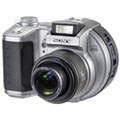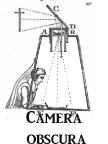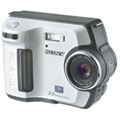
How a
Digital Camera works
How a film
camera works
Its amazing how digital Photography has expanded into everyday use.
Cost, environmental considerations (no chemicals) and portability of images
to the Internet and beyond have made this media a winner.
With this in mind digital and film cameras have a lot in common and
not much that you may have learned from experience with film photography
cannot be applied to digital. But the opportunities for professional
growth are infinite with digital
Film Camera
anatomy
 Digital Camera anatomy Digital Camera anatomy
Camera means "a room" (latin) and the first cameras where in fact small
rooms with a small pinhole that allowed light to shine on a screen.
An artist would sit in and draw the image of the view outside the camera
obscura as it was cast onto the screen upside down (inverted)
Later it was found that lenses could resolve the image with
greater
resolution and clarity.
Next it was found that certain light sensitive chemicals could used to
coat films and the hand drawn images became a thing of the past as glass
lenses focused crisp images onto film .
Pressures to adapt to new media in the 90's such as the Internet
and digital printing lead to the development of the digital light sensor
that replaced film and the rest is history.
The short focal length required in digital cameras allows for really
compact cameras and the constant
miniaturization of electronics has paved
the way for incredible image storage abilities (often over a thousand
images on storage media make for great costs and portability). constant
miniaturization of electronics has paved
the way for incredible image storage abilities (often over a thousand
images on storage media make for great costs and portability).
next page
 |




 constant
miniaturization of electronics has paved
the way for incredible image storage abilities (often over a thousand
images on storage media make for great costs and portability).
constant
miniaturization of electronics has paved
the way for incredible image storage abilities (often over a thousand
images on storage media make for great costs and portability). 